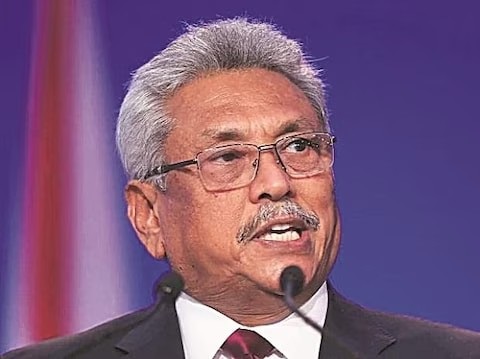Crisis-hit Sri Lanka declared a nationwide state of emergency on Wednesday, hours after President Gotabaya Rajapaksa fled the country on a military jet in the face of a public revolt against his government for mishandling the country’s economy, the Prime Minister’s office said.
The Prime Minister’s office informed the media organisations that the state of emergency in the country and a curfew in the Western province had been imposed.
“Since the president is out of the country, an emergency has been declared to deal with the situation in the country,” Prime Minister’s spokesman Dinouk Colombage said.
The island nation is mired in a deep political and economic crisis as the country’s president flew out of the country days after a huge crowd of protesters stormed his residence.
The country with a 22 million population has suffered months of lengthy blackouts, acute food and fuel shortages, and galloping inflation in its most painful downturn on record.
The Sri Lankan citizens have continued to demand the resignation of President Rajapaksa, whose government has been blamed for the chronic mismanagement of the country’s finances.
Here’s how the crisis unfolded in Sri Lanka:
April 1: State of emergency
Rajapaksa declared a temporary state of emergency, giving security forces sweeping powers to arrest and detain suspects, after a spate of protests.
April 3: Cabinet resigned
Almost all of Sri Lanka’s cabinet resigned, leaving Rajapaksa and his brother Mahinda — the prime minister — isolated.
April 5: President Rajapaksa loses majority
President Rajapaksa lost his parliamentary majority as former allies urge him to quit. He lifts the state of emergency.
April 12: Foreign debt default
The Sri Lankan government announced it defaulted on its foreign debt of $51 billion as a “last resort” after running out of foreign exchange to import desperately needed goods.
May 9: Day of Violence
A mob of government loyalists bussed in from the countryside attacks peaceful protesters camped outside the president’s seafront office in Colombo.
Nine people are killed and hundreds more injured in the reprisal attacks that follow, with crowds targeting those responsible for the violence and setting fire to the homes of lawmakers.
Mahinda Rajapaksa resigned as prime minister and has to be rescued by troops after thousands of protesters stormed his residence in Colombo.
Mahinda was replaced by Ranil Wickremesinghe, a political veteran who had already served several terms as premier.
May 10: Shoot-to-kill orders
The defence ministry ordered troops to shoot on sight anyone involved in looting or “causing harm to life”.
June 27: Sri Lanka suspended fuel sales
The Sri Lankan government said the country ran out of fuel and thus halted all petrol sales except for essential services.
July 1: New inflation record
The government published data showing inflation has hit a record high for the ninth consecutive month, a day after the IMF asks Sri Lanka to rein in prices.
July 9: President Rajapaksa’s home stormed
President Rajapaksa fled from his official residence in Colombo with the assistance of troops, shortly before demonstrators storm the compound. He was taken to an undisclosed location. Footage from inside the residence shows jubilant protesters jumping in the pool and exploring its stately bedrooms. PM Wickremesinghe’s residence was also set on fire on the same day.
July 13: Rajapaksa flees
President Rajapaksa fled to the Maldives on a military aircraft, accompanied by his wife and two bodyguards.
His departure came after a humiliating airport standoff in Colombo, where immigration staff did not allow VIP services and insisted all passengers go through public counters.
Sri Lanka seeks to elect a new president
Meanwhile, the country is considering to elect a new president on July 20.
Under the Sri Lankan Constitution, if both the president and prime minister resign, the Speaker of parliament will serve as acting president for a maximum of 30 days.
The Parliament will elect a new president within 30 days from one of its members, who will hold the office for the remaining two years of the current term.
The anti-government protesters continue to occupy the three main buildings in the capital, the President’s House, the presidential secretariat and the prime minister’s official residence, Temple Trees, calling for their resignations.
Sri Lanka, a country of 22 million people, is under the grip of an unprecedented economic turmoil, the worst in seven decades, leaving millions struggling to buy food, medicine, fuel and other essentials. Prime Minister Wickremesinghe last week said Sri Lanka is now a bankrupt country.

